- Electric & Air Hoists
- Battery Powered Hoists
- Manual Hoists
- Trolleys & Trolley Clamps
- Chain & Accessories
Call us today at (800) 728-0818
Hoists are mechanical devices that work with the overhead crane to lift and lower loads. The two main types are chain hoists and wire rope hoists and can be manual, electric, or air powered. View more information on the different types of hoists and their applications.
Hoists are mechanical devices that work with the overhead crane to lift and lower loads. The two main types are chain hoists and wire rope hoists and can be manual, electric, or air powered. View more information on the different types of hoists and their applications.
Hoists are essential elements for lifting and lowering heavy loads in factories, construction sites, warehouses, and various other industrial settings. There are several types of hoists including chain and wire rope each designed for specific applications. Choosing the right hoist depends on several factors to consider and identify in order to match the hoist type to your requirements.
The maximum weight the crane can lift.
The electrical requirements for the crane.
The type of controls (pendants, radio, cabin).
The maximum vertical distance the hook can travel.
The frequency and intensity of crane usage.
The crane’s suitability for specific environments (temperature, humidity, explosive atmospheres).
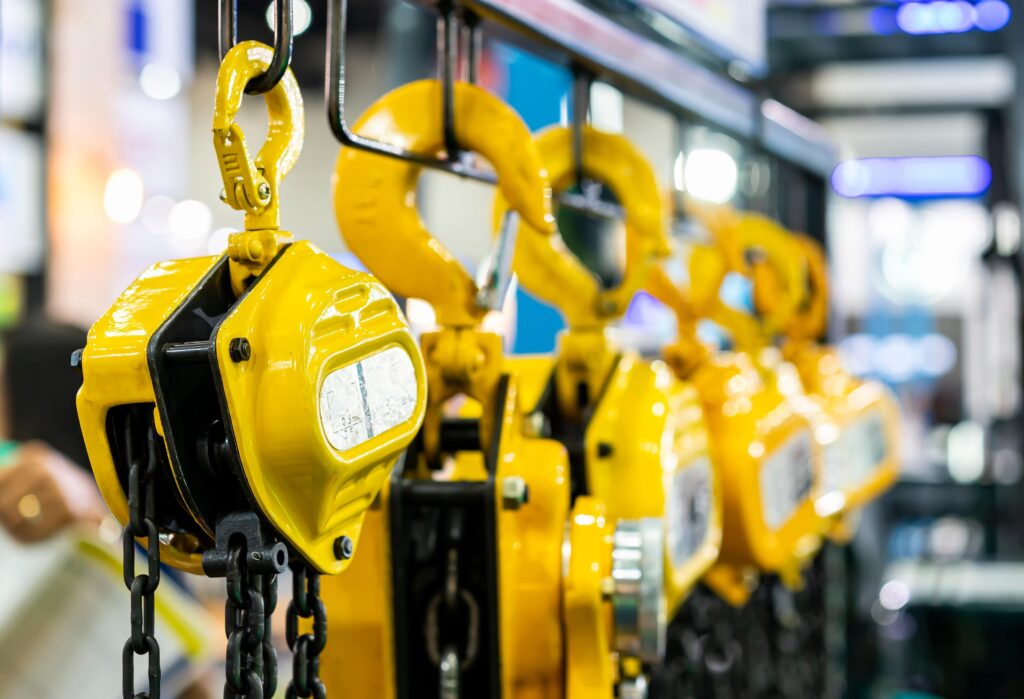
Manual hoists are a simple and reliable way to raise and lower loads without relying on electricity or compressed air. They are perfect for various applications where portability, affordability, or occasional use is needed. A manual hoist uses a hand-operated chain or lever mechanism to control a gear system that winds or unwinds a chain or wire rope. Pulling the chain or operating the lever creates the mechanical force to lift or lower the load. A braking system ensures the load stays securely suspended when the chain or lever is not engaged.
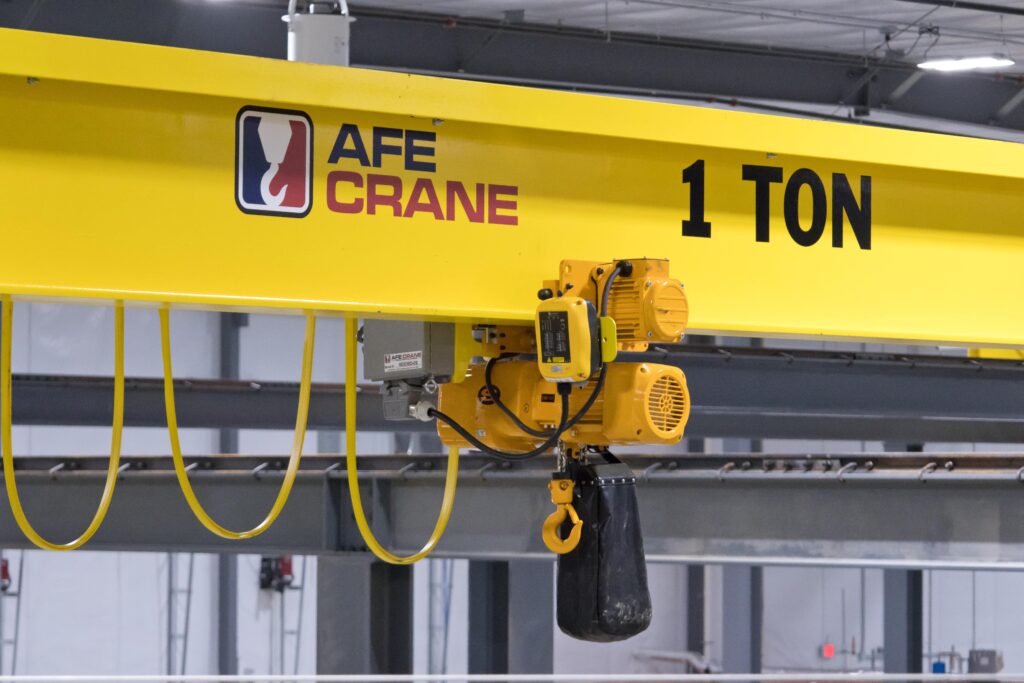
Electric hoists utilize an electric motor to provide efficient lifting of heavy loads. They are ideal for industrial settings that require frequent lifting tasks or handling substantial weights. An electric motor drives the hoist’s mechanism, either through a chain or wire rope depending on the hoist type. The operator controls the lifting and lowering function using a system controller. Electric hoists often incorporate features like variable speed drives for precise load control and braking systems for safe operation and often come with overload protection, emergency stop buttons, and upper/lower limit switches to enhance safety during use.
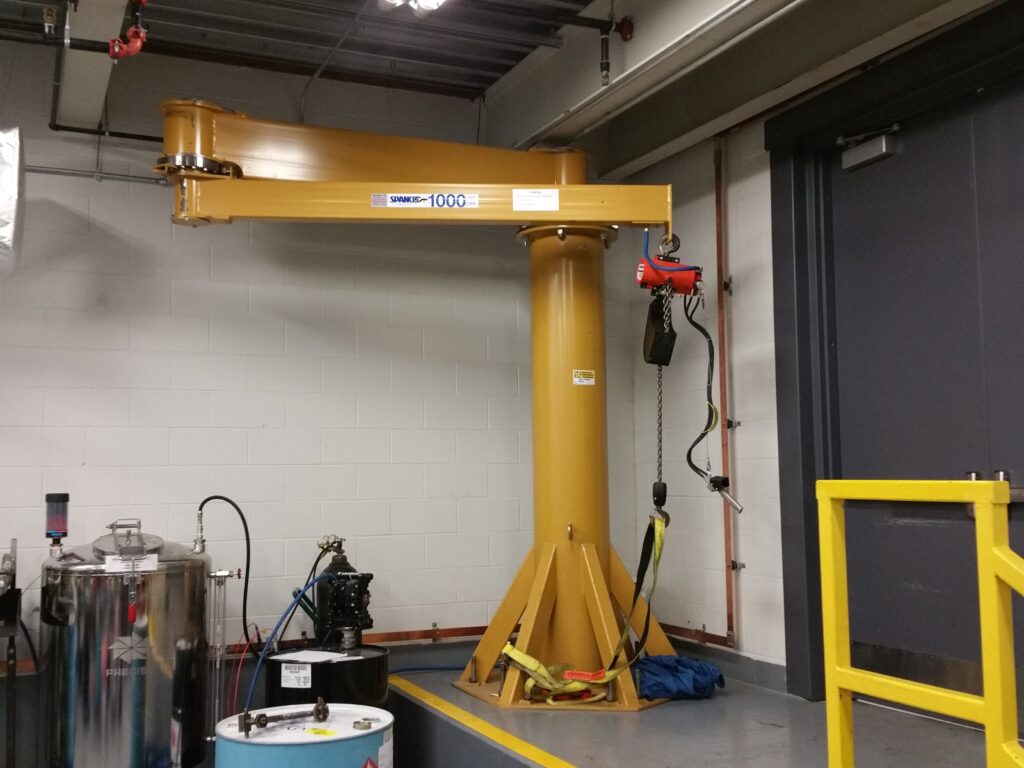
Air hoists, also known as pneumatic hoists, are a type of industrial hoist that utilizes compressed air instead of electricity to power the lifting mechanism. They offer distinct advantages in specific work environments, making them a valuable choice for certain applications. They provide a safe and practical lifting solution in environments where electric motors pose a safety risk or where portability and user-friendliness are important considerations.
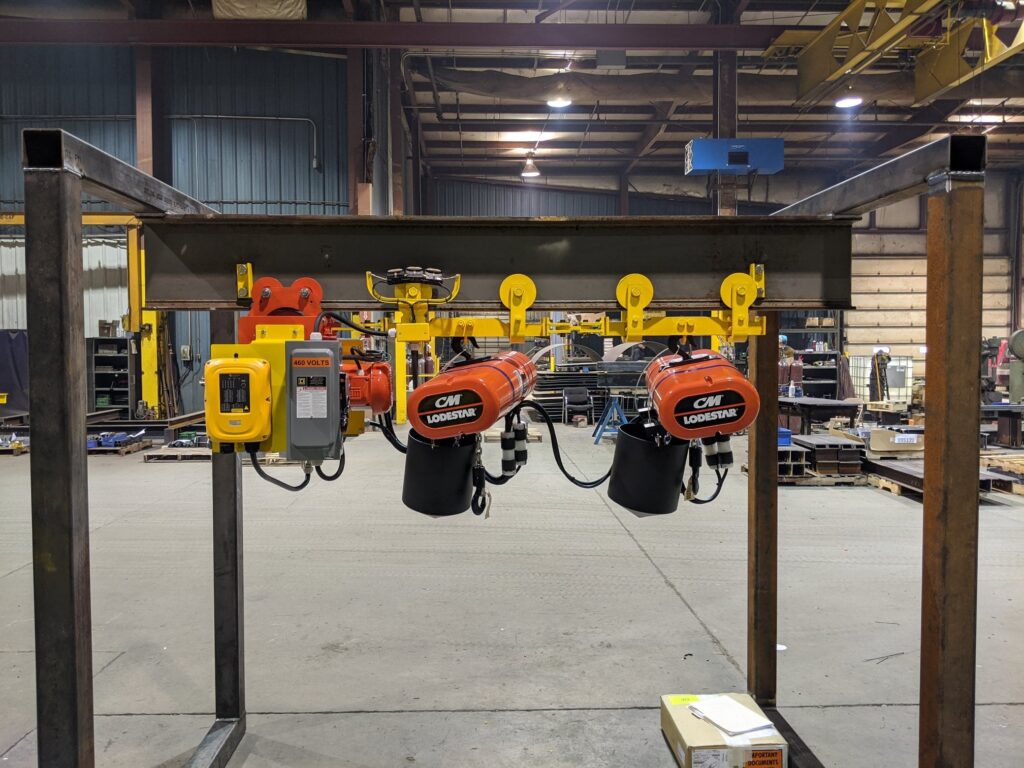
Trolleys are wheeled carriages that travel along a horizontal track or beam. This allows the hoist to move the load horizontally across the span of the track offering increased versatility and functionality compared to stationary hoists. The hoist is moved horizontally along the top or underside of the bridge girder to position it above a load.
There are three types of trolleys: manual, geared, and motorized. These can be utilized in both single girder & double girder cranes.
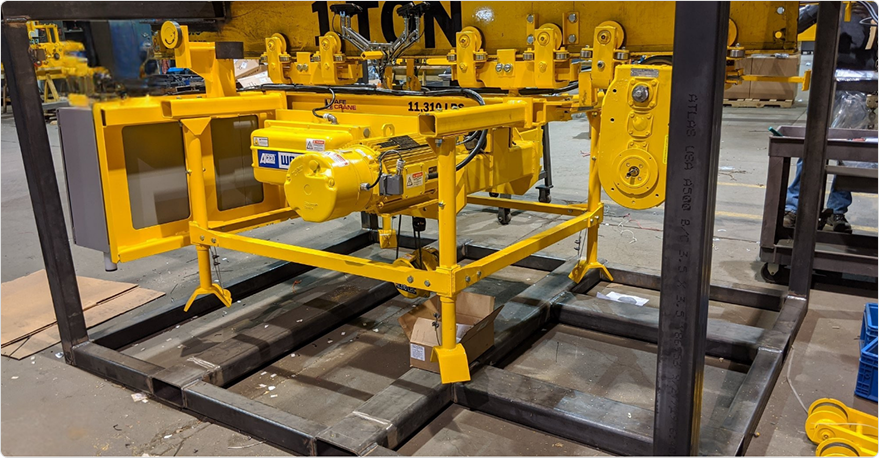
Specialty hoists are designed to meet unique industry needs, including explosion-proof hoists for hazardous environments and hot metal hoists for high-temperature foundry applications. This would also includes battery-operated hoists for remote operations, low-headroom hoists for confined spaces, corrosion-resistant hoists for harsh conditions, clean room hoists for contamination-sensitive areas, twin hook hoists for balanced lifting, and power rotating hoists for precise load positioning.
At AFE Crane, we understand that off-the-shelf hoists don’t always meet the demands of your facility or application. That’s why we offer a wide range of hoist customizations to improve performance, safety, and integration within your overhead lifting system. Whether you need to increase capacity, enhance control precision, or meet challenging environmental conditions, our team can engineer a solution tailored to your needs.
Custom chain or wire rope lengths for applications requiring additional vertical travel.
Allows for smoother operation, precise load positioning, and improved safety.
Designed for hazardous environments with flammable gases, vapors, or dust.
Optimized configurations for facilities with limited overhead space.
Weatherproofing and corrosion-resistant coatings to extend equipment life in demanding conditions.
Ergonomically arranged control buttons for operator comfort and job-specific functionality.
Integrated load cells or indicators to track real-time lifting data and prevent overloading.
Coordination of two hoists for balanced lifting of long or uneven loads.
Engineered attachments or trolleys to suit fixed, wall-mounted, or curved track applications.
Hoists prepped for PLC control or integration into larger automated systems.
If you don’t see the customization you’re looking for, AFE Crane can design a solution to fit your specific needs. Contact us to discuss your requirements.
AFE utilizes a large comprehensive supply chain for materials and parts in addition to establishing long term relationships with our parts vendors. This relationship helps us to expedite parts so that your equipment can be repaired quickly.


This file category has no files to display
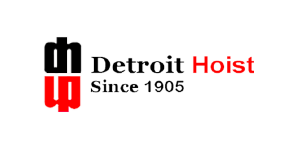
This file category has no files to display
Proper operation and maintenance of hoists are critical for workplace safety, productivity, and equipment longevity. Columbus McKinnon (CM), a leading manufacturer of lifting and rigging
Overview In material handling and industrial operations, the ability to maneuver loads efficiently and safely is paramount. Single-hand control hoists have emerged as a solution,
Hoist Lift Speeds Explained Electric chain hoists with capacities up to 1 ton typically offer lift speeds of 8 FPM (feet per minute), 16 FPM,
Understanding Upper Limit Switches in Wire Rope Hoists Upper limit switches are a critical safety component in any wire rope hoist system. These devices are
The CM ShopStar VS and Lodestar VS electric chain hoists are both engineered by Columbus McKinnon to provide precise load control in demanding industrial and
Overhead lifting operations are an essential part of many workplaces, designed to protect workers from injuries associated with heavy lifting. However, improper hoist operation can
A hoist is a device used to lift and lower loads vertically, utilizing a chain or wire rope as the lifting medium. Hoists can be classified by their power supply type—manual, electric, or pneumatic—and by their suspension type, such as hook-mounted, push trolley, or motorized trolley.
When choosing a hoist, consider factors such as the load capacity, lifting height, speed requirements, power source (manual, electric, or pneumatic), the type of lifting medium (chain or wire rope), and the operating environment, including any safety or durability requirements for the application.
A hoist is designed exclusively for lifting and lowering loads vertically, while a crane is a complete system that includes a hoist and enables both vertical lifting and horizontal movement for transporting loads across a space.